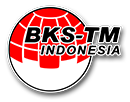Author Guidelines of FORPIT
MANUSCRIPT GENERAL GUIDELINES
- The authors must follow the given template which can be downloaded on FORPITwebsite.
- The manuscript must not contain any plagiarism element.
- The manuscript is in English and at least 10 pages in length.
- It is typed using A4 size paper (210 mm x 297 mm) in two columns from the second page with upper, lower, right, and left margins 2.5 cm wide.
- The middle of the first page contains the title of the manuscript in capitals and 12pt size.
- Under the title lies two abstracts content (in English and Indonesian) and the keywords from each abstract.
- The manuscript is typed using one space size, and Times New Roman font.
- The submitted manuscript should be in Microsoft Word document, not in PDF or other form.
MANUSCRIPT BODY TEXT GUIDELINES
A. ABSTRACT
Abstract is a synopsis of the work containing the problems studied, the purpose of research, information and methods used to solve problems, and conclusions. Abstracts are limited to 200 words and should not contain references, equations, figures, and tables. It only has ONE PARAGRAPH without any tab. The font size for abstracts and keywords is 11pt. Keywords are separated by comma (,). It contains no more than six (6) words, but the minimum is three (3) words.
B. INTRODUCTION
In the Introduction chapter, the writer must state the purpose of the work at the end of the introduction. Prior to the objective section, the author should provide adequate background, and a brief literature survey to explain the solution or method, point out the limitations of previous studies, indicate what you hope to achieve to resolve the problem boundaries, and demonstrate the scientific benefits or novelties of this article.
The official language of articles to be published in FORPIT is English starting from the year 2023. Editors will also accept article manuscripts submitted by foreign and local writers to FORPIT which are written in English. Articles submitted must have never been published elsewhere and clearly stated in the Introduction (Chapter 1).
This chapter also provides the theoretical background and specific terminology used in your research. This section can help readers from various backgrounds to more easily understand the content of the article. Quotations in a literature review, for example, are written in the form: “…used as an object of research [1]”. The citations are mentioned in the Bibliography section and are arranged in the order mentioned in your article. The writing terminology or literature study is not written in a special sub-chapter in Chapter 1. The references only provide relevant studies and information to support the research background, method, and discussion.
Please also add at the end of the Introduction a statement that this article is the original result of your research or the development of previous research using your own ideas. Articles that you submit will be partially or completely checked with plagiarism checker software.
C. METHODS
The methods described in this section are scientific in nature and should allow readers to repeat your experiments. Please provide sufficient detail so that the results of the study can be reproduced. Published methods should be indicated with appropriate references in the Bibliography section. Where relevant modifications exist, these should also be explained.
D. RESULT AND DISCUSSION
Research results must be explained clearly and concisely. The results should summarize (scientific) findings rather than provide very specific data. Please explain the differences between your results or findings and previous publications by other researchers. The discussion should explore the significance of your work. Provide quotes from previous studies that can support the results of your research.
E. CONCLUSION
The closing section should be in the form of a concluding paragraph that addresses the research objectives and tells how your work can advance current knowledge. Without clear conclusions, reviewers and readers will find it difficult to judge the work, and whether or not it should be published in a journal. Do not repeat the results that have been shown in the abstract or just the experimental results points. Provide a clear scientific justification of your work, and indicate possible applications and further development. You should also suggest future research and/or indicate ongoing research.
F. REFERENCES
Citation to other writing sources mentioned by the author in the manuscript should be adjusted to the References chapter sorted by the occurrence of the quotation, not by alphabet. To make things easier, we recommend using the MENDELEY software facility as a references manager or using the REFERENCES Menu and the BIBLIOGRAPHY submenu available in Microsoft Word.






